Sable Island has been the focus of human interest and activities for over three centuries. Mapmakers, settlers, fishermen, mariners, shipwreck victims, lifesavers, naturalists and scientists, prospectors, educators, students, artists, journalists and visitors have explored, survived, studied, and otherwise experienced Sable Island—directly, with toes in the sand, or from a distance. For many, their fleeting or long-term encounter with the island was memorable—tragic, perplexing, inspirational, mildly interesting, inconvenient, educational, life-changing, joyous. And through these people and their work, adventures and misadventures, connections with the island extend beyond them and into the lives and communities of others who may not have touched or been touched by Sable Island.
In this series of “Connections”, special moments and lasting impressions are shared by people who have experienced Sable Island first-hand or have a distant, but enduring, relationship with the island.
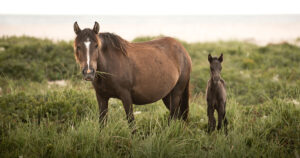
Now, it is about so much more – Lauren Hughes, February 2023
As we walked the network of horse trails… I was captivated by beetles, spiders, and the tiny sweat bee – newly recognizing the critical role that all of these creatures play in the island’s ecosystem.
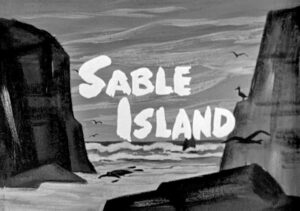
A Ghostly Introduction – David Griffiths, 2021
I first learned about Sable Island as a 10 year-old city boy from England… watching television alone on a sunny Saturday afternoon… a 1956 CBC documentary about Sable Island.
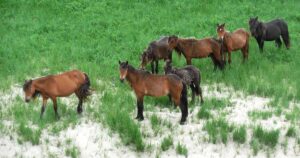
Sable: A Dream Realized 60 Years Later – Pamela Delaney, September 2020
I had not just left the mainland of Nova Scotia that day, I had left the planet, my earthly tether, my mortal coil. I had finally been to Sable Island, where souls fly free.
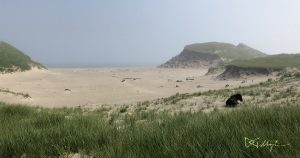
The Shifting Sands of Sable – Devon James Gillighan, February 2020
Since childhood I have been fascinated by islands. In summer 2018, I had the privilege and honour of visiting an island unlike any other. Sable Island is solitary, sensitive, and sublime in every sense.

Wind, Waves and Sand – Jordan Eamer, April 2020
Having studied coastal dune geomorphology, how perfect to end up in a place like Sable, an island entirely consisting of dunes, where sand, in wild and weird ways, shapes, and is shaped by, the landscape.
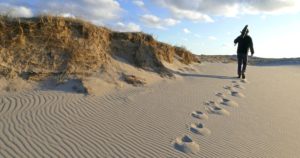
Sable Island, Just a Wink in the Sea – Greg Stroud, April 2020
My aunt warned me that if I didn’t behave I’d be shipped off to Sable Island. Years later when I told her I was going to work on the island, she looked at me very seriously and said, “What did you do?”
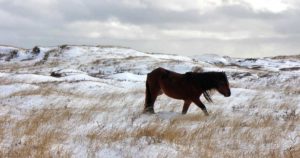
Island of Sand and Horses – Allison Taylor, February 2020
A winter on Sable Island, working with the Meteorological Service for 3.5 months, from November 2015 to February 2016. The wind seems constant. You wouldn’t think sand moving over sand could be that noisy.
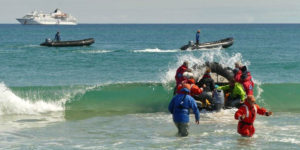
A Trip to Sable Island Aboard the RCGS Resolute – John Merrick, 2019
It was too good an opportunity to pass up! One Ocean Tours was advertising an adventure excursion around the Gulf of St Lawrence, but the highlight for us was the opportunity for a trip to Sable Island.
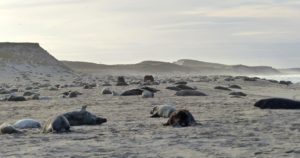
Grey Seal Research Program, Winter, Sable Island – Paul LeBlanc, 2019
Standing on this island of sand on a cold winter day, experiencing a riot of sensations in a place that stimulates all of one’s senses—sight, sound, touch, smell and taste—all at the same time.
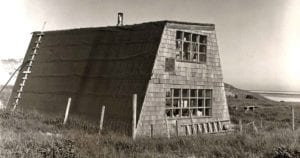
A Surveyor on Sable Island in the 1970s – Tom Lockhart, 2018
I first visited Sable in 1974 while working for a Calgary based survey-engineering company. One of the company’s clients was Mobil Oil, and I was there to take measurements at Mobil’s West Sable well.
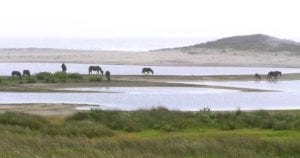
Once upon a time – Rita Wilson, 2018
I went to Sable Island. A land of magic. It had to do with luck. I was a member of the Read by the Sea committee casting about for a fundraiser; someone thought of Sable Island. That was ten years ago.
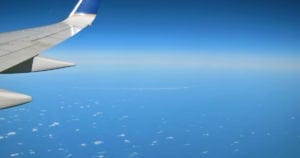
Sable Island… revisited – Jennifer Veres, 2018
So, 9 years later, I’m on a flight returning from Portugal. After hours of looking from my window seat at the vastness of the Atlantic, something shining, small and crescent-shaped, caught my attention.

